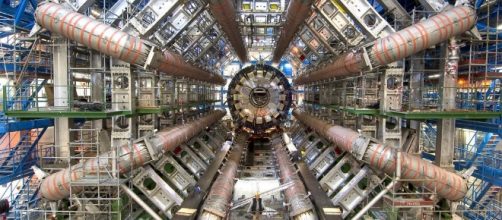Physicists at the Large Hadron Collider, located underneath the France-Switzerland border near the city of Geneva, have announced that they have discovered a new subatomic particle. They finally got a momentary look at a long theorized but until now never-proven type of baryon. The team of researchers submitted their findings to be published in the scientific journal "Physical Review Letters."
How was this particle discovered?
Oxford physicist Guy Wilkinson said the new baryon was discovered by smashing together atoms using the Large Hadron Collider.
It was during the experiment, for a tiny fraction of a second, a baryon particle named Xi cc was created. This baryon particle had two "charm" type heavy quarks and a light quark. This is an abnormal and amazing discovery for physicists since in the natural world baryons can only have one heavy quark.
More information about baryon Xi cc
The two heavy quarks of baryon particle Xi cc were orbiting each other much like twin suns in the same solar system would, with the light quark circling around them. This new baryon particle is also heavier than a proton, which has a mass of 1.6726 x 10 to the -27 kilograms. Physicists around the world are now praising the discovery and excited for what it could mean.
Wilkinson said that this will open up an entirely new "family" of baryons to discover and study. He added that it will also open up a new view on the behavior of the strong interactions at work between particles.
What is a baryon anyway?
Baryons are subatomic particles that are made up of quarks, with the most common and well-known ones being protons and neutrons. Quarks, in turn, are smaller particles that come in two common types that are light and four heavier types. Baryons are part of the hadron family of particles and their name comes from the Greek word for "heavy."
This was only the Large Hadron Collider's latest discovery
The experiments performed in the Large Hadron Collider all involve accelerating matter and then quickly bringing it to a jarring stop.
This creates a burst of energy that makes a barrage of particles with various properties. Then this process is done over and over, to see if particles create new forms or interactions. In April, the collider helped with measuring a rare meson decay to confirm the prediction of the standard model. In March, it also helped to identify five brand new subatomic particles.
Five particles in one go! @LHCbExperiment observed an exceptionally large group of particles in a single analysis: https://t.co/R0EVqZIAhJ pic.twitter.com/1TiFFJoCHh
— CERN (@CERN) March 16, 2017


